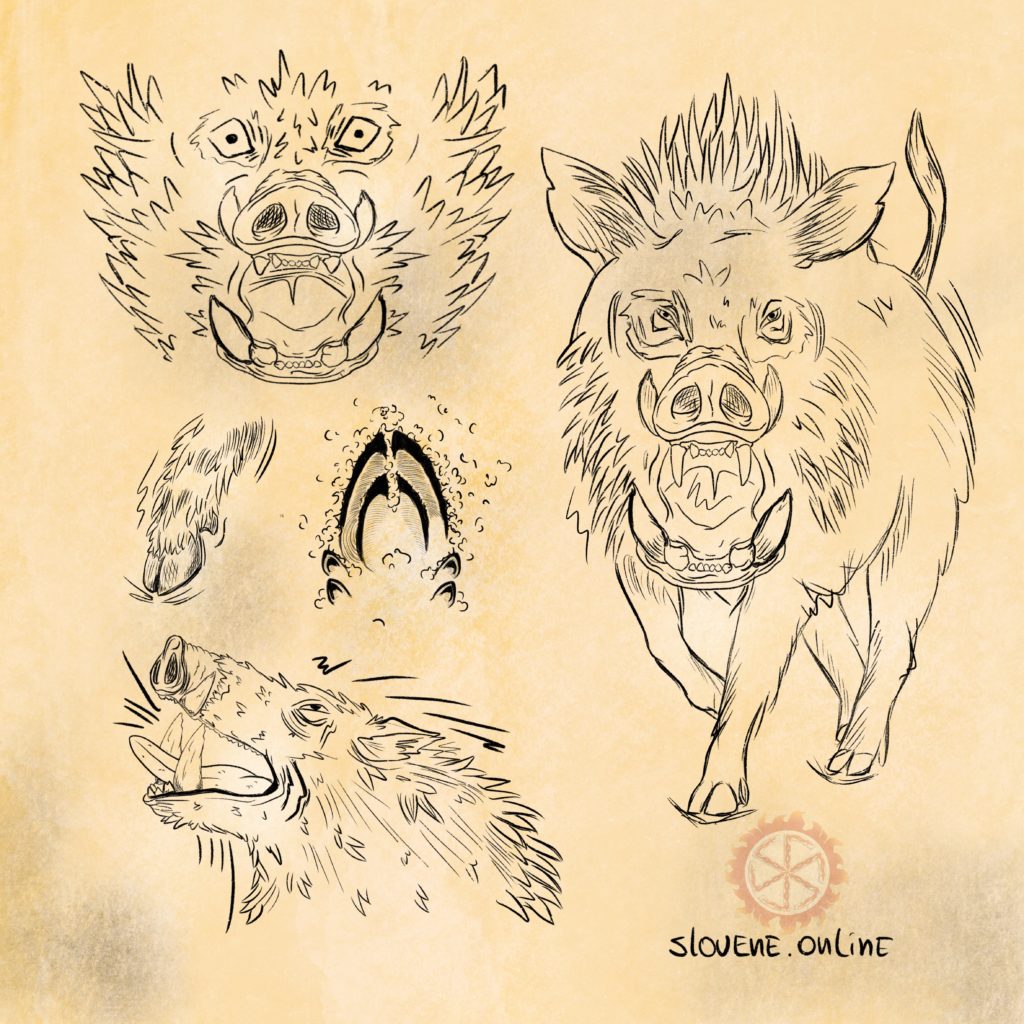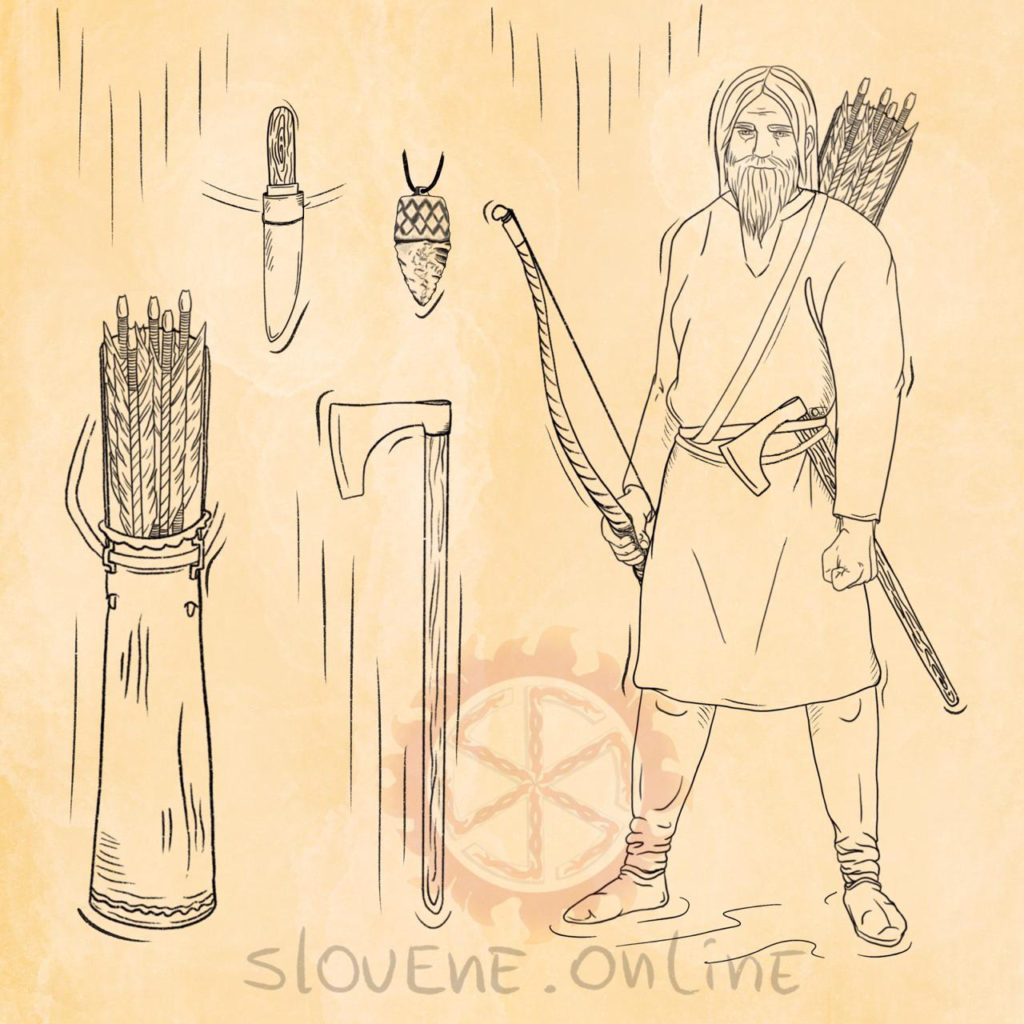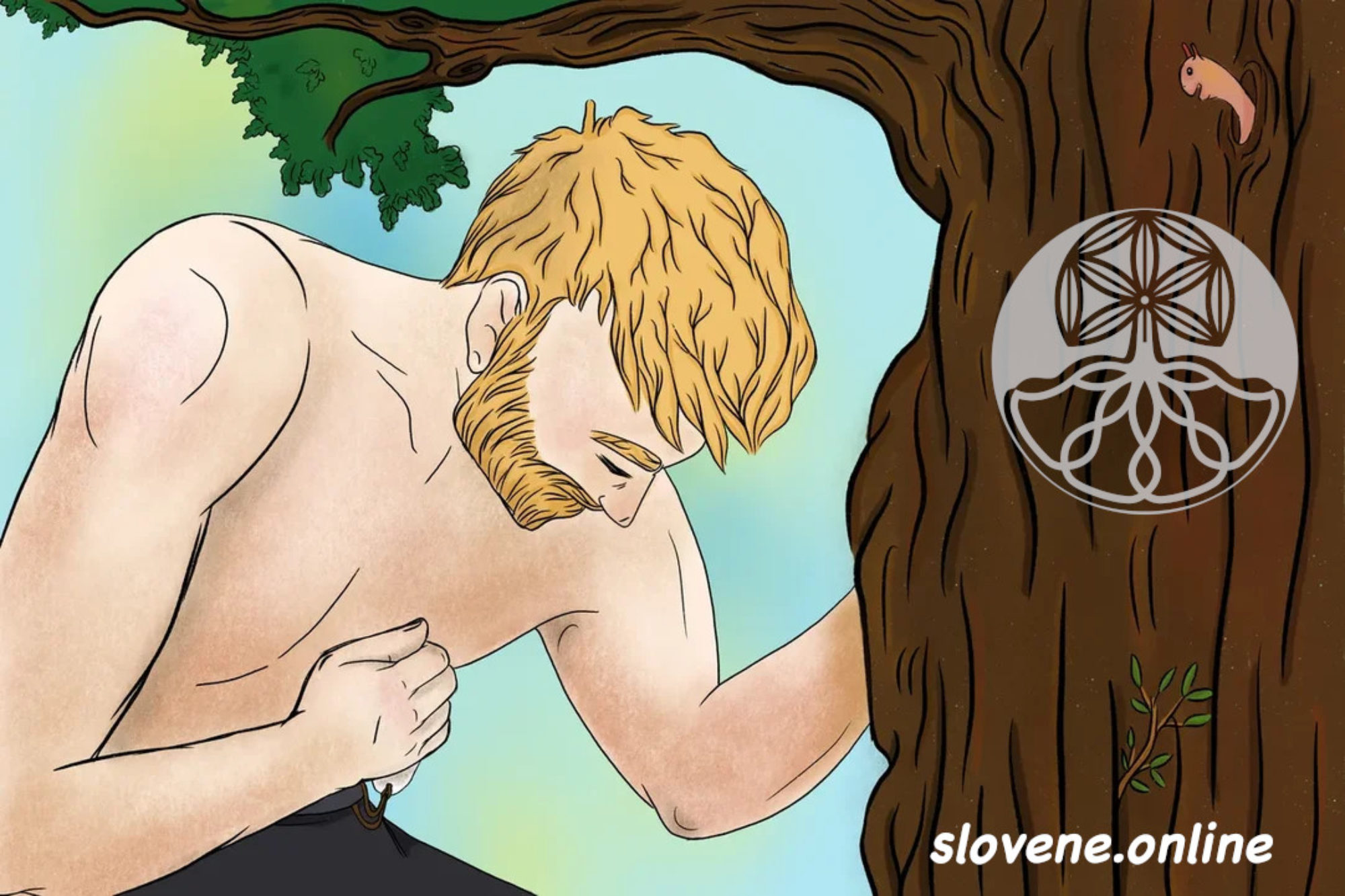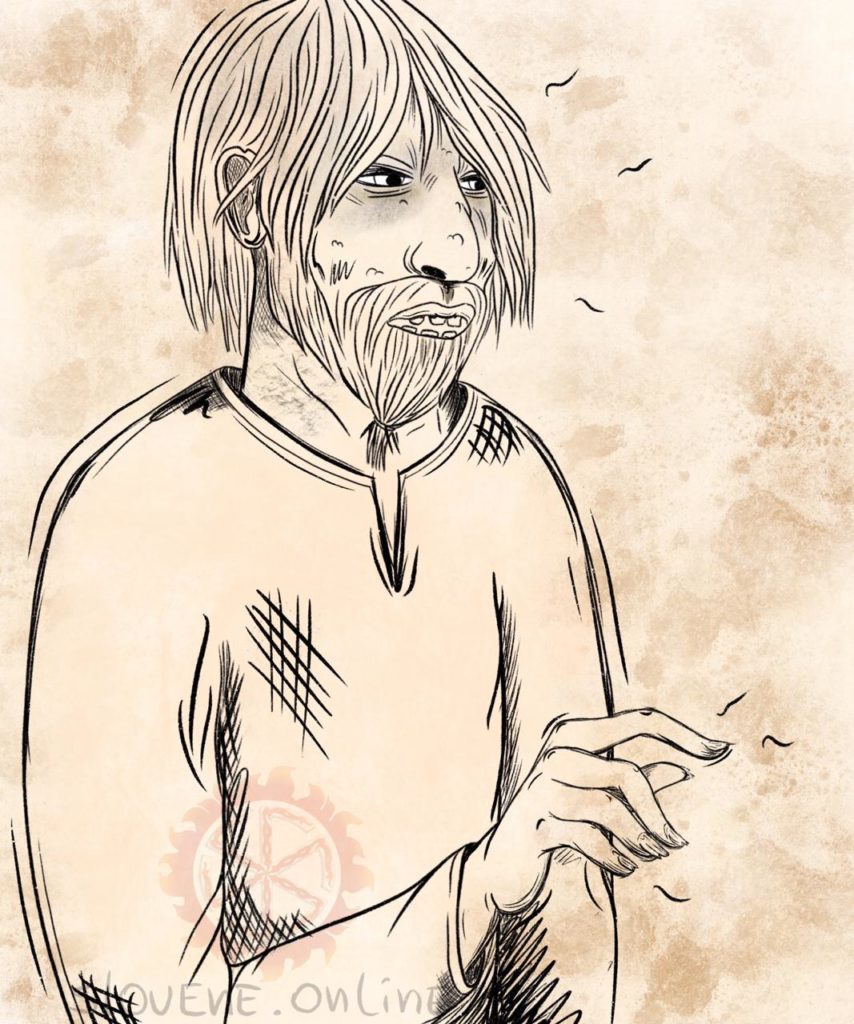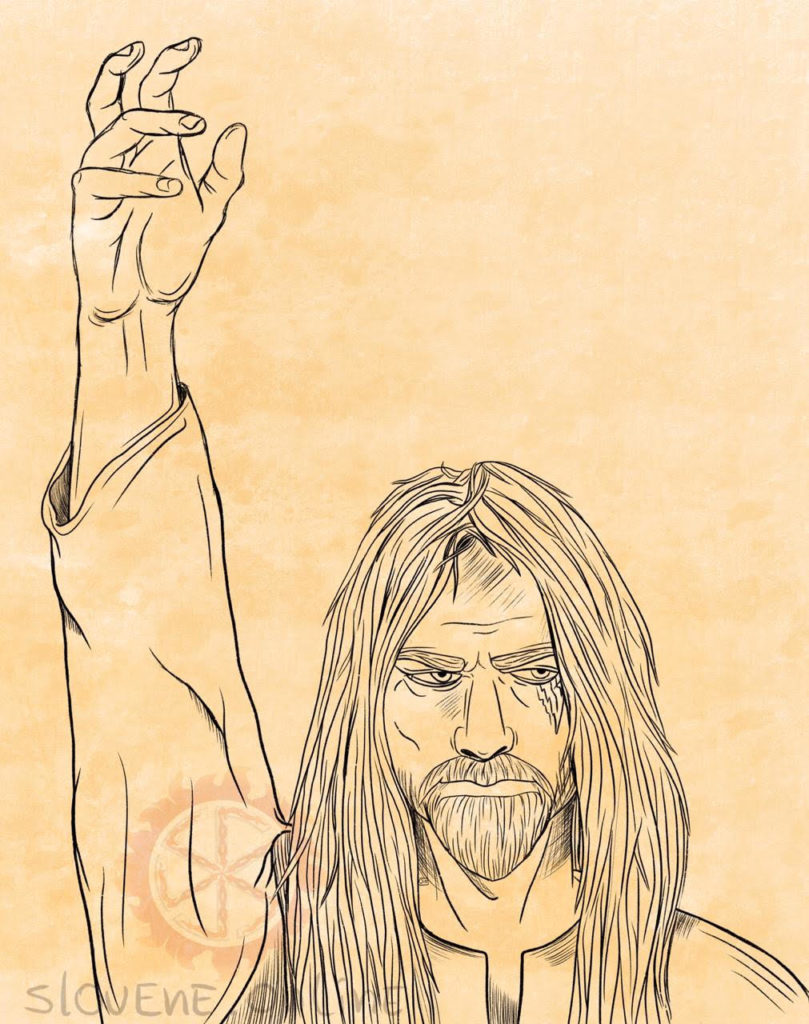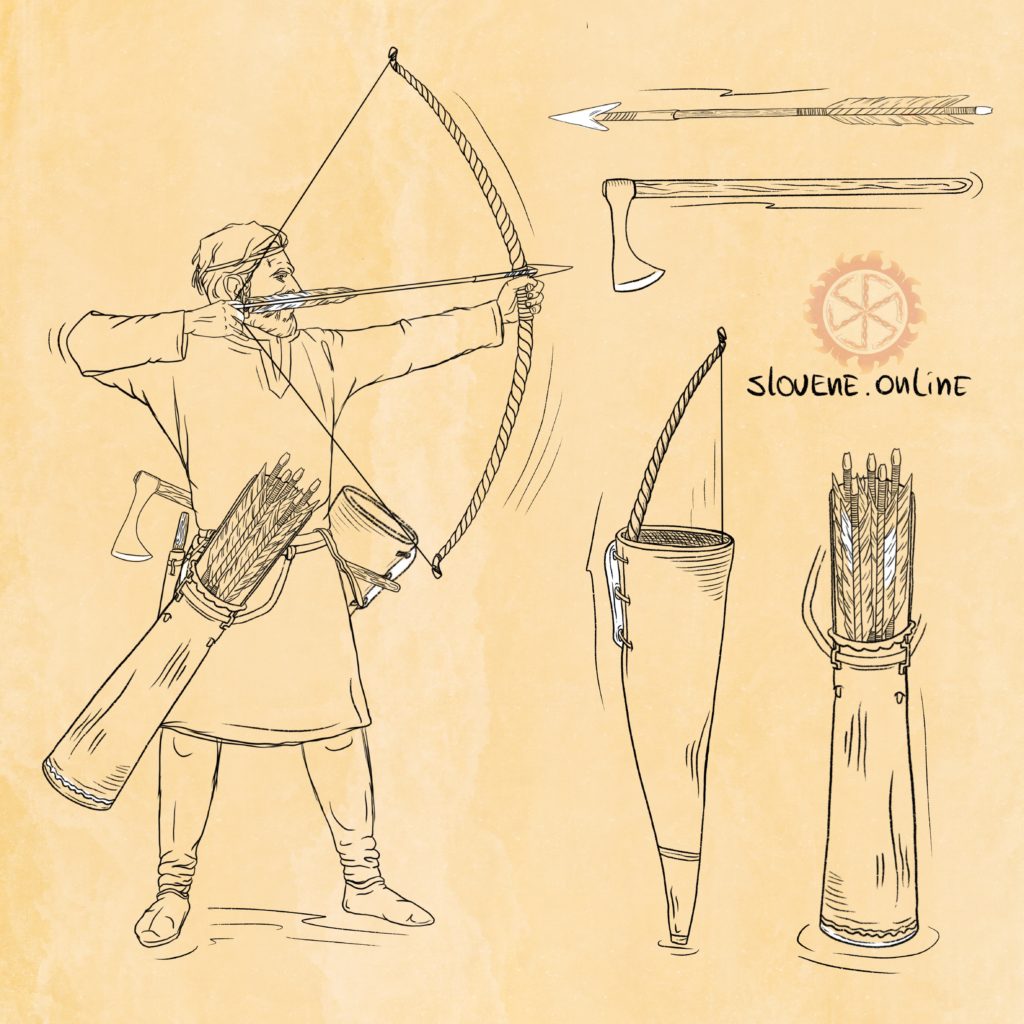Today we are giving an answer for the previous post’s question, as well as we will reveal a title of our first story about a life of Slavic tribes in the Early Medieval times… Guessed already? 😉 Indeed it is a BOAR! Introducing a concept art of one of the leading characters in the story…
According to archeology, the worshiping traditions of the Boar (Wieprz) by the Slavs are ancient. In 1908, 1975 and 1984 ancient oak trees with boar jaws affixed in them, were elevated from the bottom of Dnieper and Desna rivers. These sacred oak trees are dated from VIII to X century – covering a long period of history when sacrifices were made to the Slavic gods near these trees (an oak – is the tree of Slavic god Perun).
Well, this is about forest boars, but there were marine as well …In the very first years of XI century, Thietmar of Merseburg in his “The Chronicon” talks about a legend of the Slavic tribe Ratari, whose principal city of Rethra (Ridegost) was located on the Baltic Sea: “An old legend, enmeshed in various superstitions, testifies that when they are in a grave danger, a huge boar with white glistening fangs comes out of the sea… to reveal itself to many.”
Thus, the boar was specially honored by our Slavic ancestors.
